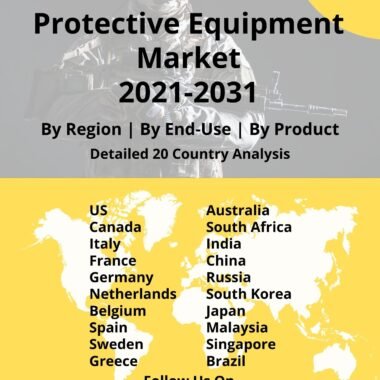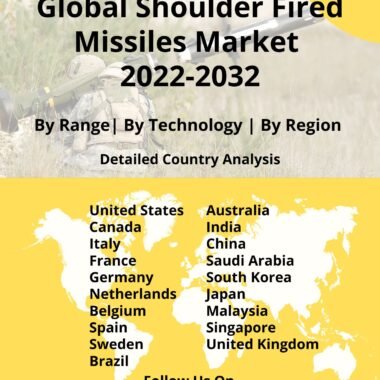Description
Global Directed Energy Weapons Market
Frequently Asked Questions of DEW Market
Modern combat has the potential to be highly dramatic. It’s a very disruptive technology, and the country that develops and feels these capabilities first will have a distinct advantage on the battlefield. The utilization of electromagnetic energy, such as high-intensity lasers, high-powered microwave devices, and laser SATCOM communication terminals, is referred to as direct energy. Direct Energy Weapons market is used for two main purposes. The first is an extremely high-intensity beam of light that can identify a target from a very great distance or, if necessary, destroy that target from a very long distance.
Another application of direct energy is a very high-intensity beam of radio frequency energy that can be directed toward a target to disable it, either by disrupting the electronics or causing damage in some other way. One might think that directed energy is a relatively new development in warfighting, but it dates back to Archimedes’ time. It is reported that Archimedes used mirrors to direct the rays from the Sun at approaching enemy ships to set their sails on fire, but today we’ve gotten to the point where these weapons are becoming real and have real applications in the twenty-first century, and it is time for us to start getting these weapons into the field. Three, they often have very large magazines, nearly endless mag, four, they have stealth flight characteristics, making them exceedingly difficult to identify and intercept, and five, they can be tuned from lethal to non-fatal.
The United States Army will officially deploy a laser-equipped Stryker armored vehicle platoon. The Stryker-mounted laser weapon successfully collected, tracked, targeted, and defeated multiple mortars during a live-fire test. Its directed energy also renders small, medium, and large drones ineffective. The 50-kilowatt laser, according to Raytheon, can offer soldiers a new degree of safety as the army tackles increasingly complex threats. China has also undertaken efforts to build directed-energy weapons, with photographs and films of hand-held and vehicle-mounted laser systems released by official media and businesses. These include a hand-held damaging laser weapon intended for domestic law enforcement — crowd control — however its inventors claim that when set to maximum strength, the laser can instantaneously damage human skin and tissue. It is also capable of igniting clothing, knocking a small drone out of the sky, and blowing up a fuel tank.
Russia recently claimed that it was utilizing a new generation of powerful lasers to destroy enemy drones, deploying some of Moscow’s secret weaponry to counter a flood of Western weapons. The laser weapon, known as the Zadira-16, is installed on an armored truck. Western observers first noticed the device in 2017 at a Russian defense exhibition. It was created by the Russian Federal Nuclear Centre in Sarov, Nizhny Novgorod. The center is run by the state-owned atomic energy firm Rosatom.
Major factors driving directed energy weapons market Growth
The battlefield is constantly evolving and because of the sheer magnitude of emerging threats, existing kinetic systems such as air missile defense batteries will be unable to fight against threats such as drone swarms. It will be critical to defeating these threats by combining non-kinetic, directed-energy devices such as high-energy lasers with kinetic defenses. This will be one of the key Direct Energy Weapons market trends that will drive the Direct Energy Weapons market growth.
Trends influencing the directed-energy weapons market size
Laser and RF source technology, system automation, sophisticated power and cooling technologies that can be integrated into military platforms in the future, beam control, and target detection are some of the key Direct Energy Weapons market trends that will influence the growth of the market. AI will also play a pivotal role in detecting and engaging targets.
Directed-energy weapons market forecast & dynamics
Increasing defense spending will drive R&D and procurement activity for directed energy weapons. Procurement will also be driven by prevailing geo-political conditions in Europe and the Asia Pacific. The market forecast includes a comprehensive market analysis and market size. The Direct Energy Weapons market analysis includes regional Direct Energy Weapons market size, drivers, restraints, and opportunities. The regional analysis also includes country-wise market size.
Directed energy weapons market analysis for Recent Developments
At Porton Down, the UK Defense Science and Technology Laboratory (DSTL) has conducted its first long-range laser-directed energy weapon (LDEW) test. The test verified the performance and viability of high-energy lasers and related technologies, such as the beam director, in intercepting long-range targets. A DragonFire demonstrator was tested against various targets at varying distances throughout the demonstration. The demonstration was attended by experts from many sectors as well as industrial partners who contributed to the growth of the laser capacity.
Lockheed Martin has delivered to the Defense Department its most powerful directed energy weapon to date. The 300-kilowatt laser was created as part of the High Energy Laser Scaling Initiative, or HELSI, which is overseen by the office of the undersecretary of defense for research and engineering. Lockheed Martin was chosen by the office to build the 300 kW-class capability in 2019. According to a Lockheed Martin news statement, the corporation delivered the laser which is the most powerful it has ever developed is ahead of schedule.
The Pentagon has been prompted to consider high-power microwave weapons as a counter-measure to drones, both advanced and ordinary, that were used for devastating attacks on sophisticated armaments in the Russia-Ukraine and West Asia conflicts. Since Ukraine pioneered the use of civilian drones as kamikaze UAVs and Russia introduced its Lancet loitering munition, activity in US military planning and defense industrial corridors has been high. High-power microwave (HPM) technology, which was previously classified, sends a dense, concentrated beam of heavily charged electrical energy on aerial threats such as drones and missiles, which heats and ‘fries’ their internal electronics. Because of the underlying principle and the impact on the target, it is classified as a ‘non-kinetic hard-kill weapon.’
Directed Energy Weapons (DEW) such as HPMs and lasers are more technically complex, expensive, and power-hungry than other non-kinetic weapons such as jammers. This week, RTX (formerly Raytheon) was awarded a three-year contract to design, build, and test two HPM systems for the Navy and Air Force, with prototypes set to be delivered next year. The Air Force also used its self-developed Thor system, which fills a 20-foot shipping container, to take on a slew of drones, extending tests that began in 2019. Similarly, Lockheed Martin has been testing its Morfius system, which is housed in a small reusable drone and can zap threats from a short distance. Because of the “ubiquity and variety” of drones in use, defining the threat has become ” difficult.” This starts with a disagreement about how many drones constitute a swarm, ” which could range from just a few to dozens or more.” This also limits the capability of weapons such as the HPM, which “wouldn’t take out every drone.
This is due to the high power requirements and relatively bulky nature of DEWs such as HPMs or lasers, which require a strong, reliable, and long-lasting power supply to operate. Another issue is the cost of their upkeep and logistics. The current supply chain disruption in US manufacturing, as well as the crisis in the American defense industrial base itself, are likely to complicate matters.







